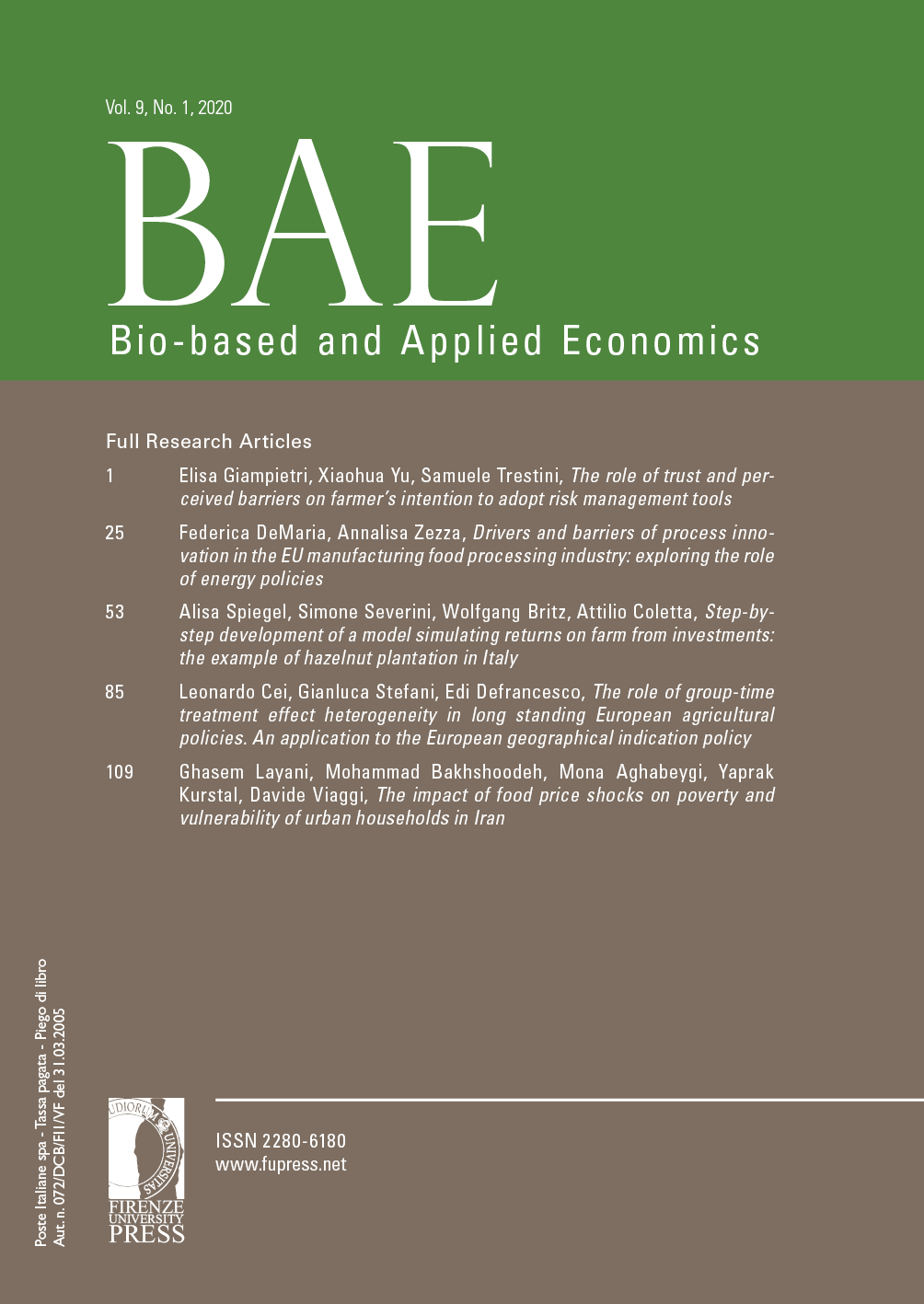Published 2020-11-05
Keywords
- Insurance,
- mutual fund,
- income stabilisation tool,
- trust,
- structural equation modeling
How to Cite
Abstract
This paper adds to the ongoing debate about low farmers’ uptake of risk management (RM) tools subsidised by the Common Agricultural Policy (CAP). In particular, the research pioneers the investigation of whether and how trust towards the relevant intermediaries and the perceived barriers to adopting may influence farmers’ intention to adopt the insurance and to participate in mutual funds (MF) and in the Income Stabilisation Tool (IST). In the light of the current CAP reform, as a novel contribution this paper also questions the efficiency of the new operating rules established by the Omnibus Regulation. The research proposes a conceptual framework to simultaneously assess these underinvestigated factors and several other determinants of the intention to adopt (e.g. risk attitude). Data were gleaned from direct interviews among 105 Italian farmers and analysed through structural equation modeling. The results confirm the positive role of trust in influencing the intention to adopt the insurance, which is notoriously affected by problems of information asymmetry. Similarly, trust is a key element in influencing the intention to participate in the IST, which is a collective instrument based on solidarity and mutuality indeed. Moreover, the higher the perceived barriers to adopting, the lower the intention to participate in a mutual fund, for which therefore further informative initiatives (e.g. on benefits from the adoption and the ease of use) are required. Interestingly, the results show a positive impact of the new CAP policy changes on the intention to both take out the insurance and participate in the IST, thus opening up to positive prospects for the EU risk management strategy post-2020. To conclude, this study paves the way for new research avenues in the field of farmers’ adoption of subsidised RM tools.






